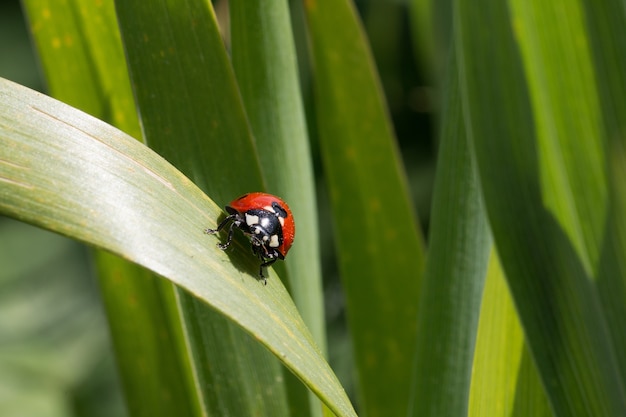Fascinating Facts about Ladybugs

Ladybugs are actually beetles, not bugs.
There are over 5,000 different species of ladybugs worldwide.
Ladybugs can range in size from 1/16 to 3/8 inches.
Ladybugs can have red, orange, yellow, brown, or even black bodies.
A ladybug’s bright colors act as a warning to predators that they taste bad or are toxic.
Ladybugs are beneficial insects because they eat pests like aphids, mites, and mealybugs.
Ladybugs are considered good luck in many cultures around the world.
A single ladybug can eat up to 5,000 aphids in its lifetime.
Ladybugs have a lifespan of about one year.
Ladybugs hibernate during the winter in large groups.
Ladybugs can excrete a smelly and bitter liquid when threatened, which deters predators.
Ladybugs can fly at speeds up to 37 miles per hour.
In some species, ladybugs can lay up to 1,000 eggs in their lifetime.
Ladybugs have a very strong sense of smell and can detect the pheromones released by other ladybugs.
Ladybugs are believed to bring blessings and grant wishes when they land on someone.
In some cultures, it is believed that killing a ladybug brings bad luck.
Ladybugs are great for organic gardening because they help control pests naturally.
Some species of ladybugs have spots that fade over time.
In traditional folklore, the number of spots on a ladybug’s back indicates its age.
Ladybugs are attracted to the color yellow.
Fascinating Facts about Ladybugs part 2
Ladybugs can eat pollen and nectar when prey is scarce.
Ladybugs can lay their eggs on the undersides of leaves to protect them from predators.
Ladybugs have a unique walking pattern called stilting where they alternate between walking with their front and back legs.
Ladybugs can be trained to respond to certain smells and sounds.
Ladybugs have six short legs and two wings.
Ladybugs are not harmful to humans or pets.
Ladybugs can be found on every continent except Antarctica.
Ladybugs are most active during the daytime.
Ladybugs have been a symbol of love and happiness in many ancient cultures.
Ladybugs have powerful jaws that help them chew through tough prey.
Ladybugs go through a complete metamorphosis, starting as eggs, then turning into larvae and pupae before becoming adults.
Ladybugs have the ability to roll themselves into a ball when threatened, protecting their soft undersides.
Ladybugs have a high reproductive potential, with some species capable of producing several generations in a single year.
Ladybugs often gather in large groups to hibernate during the winter months.
Ladybugs have a unique way of communicating with each other through the vibrations they create.
Ladybugs have a short lifespan, with some species living only a few weeks.
Ladybugs have excellent eyesight and can see in multiple directions at once.
Ladybugs are attracted to the smell of plants and use their sense of smell to find prey.
Ladybugs release pheromones to communicate with other ladybugs.
Ladybugs have a hard exoskeleton that protects them from predators.
Ladybugs can be found in a variety of habitats, including forests, fields, gardens, and even urban areas.
Ladybugs are popular subjects in children’s books and cartoons due to their bright colors and cute appearance.
Ladybugs have been used as a natural form of pest control for centuries.
Ladybugs have a gentle bite that is rarely felt by humans.
Ladybugs are known for their ability to bring joy and delight to people of all ages.

